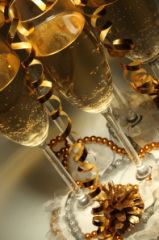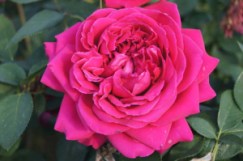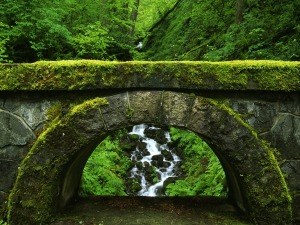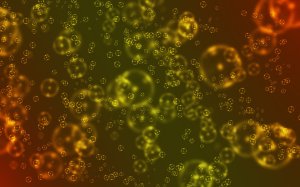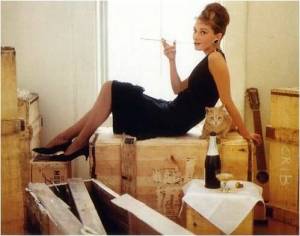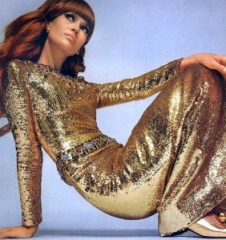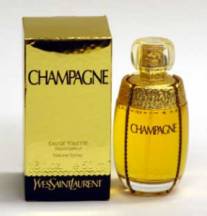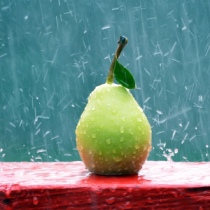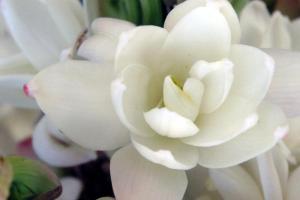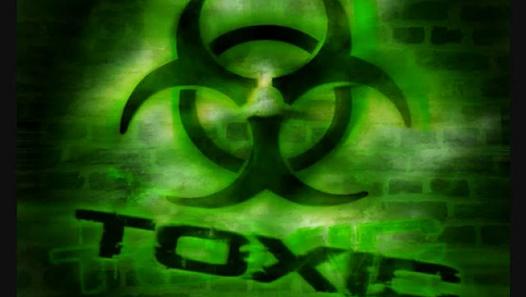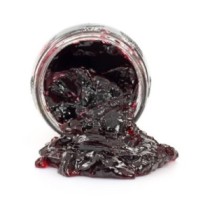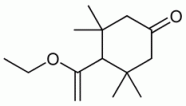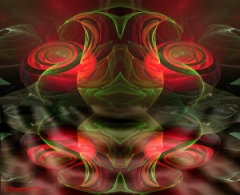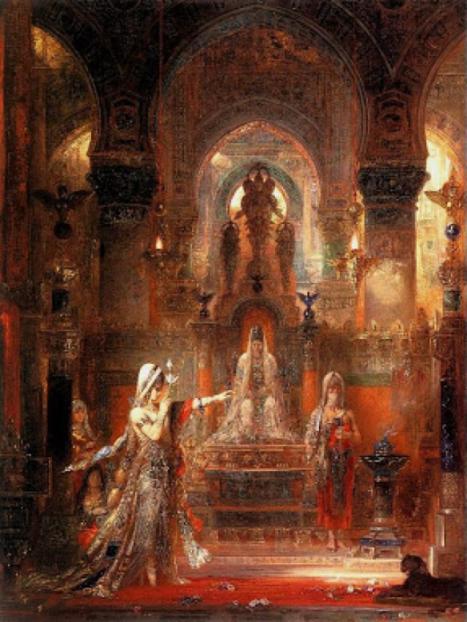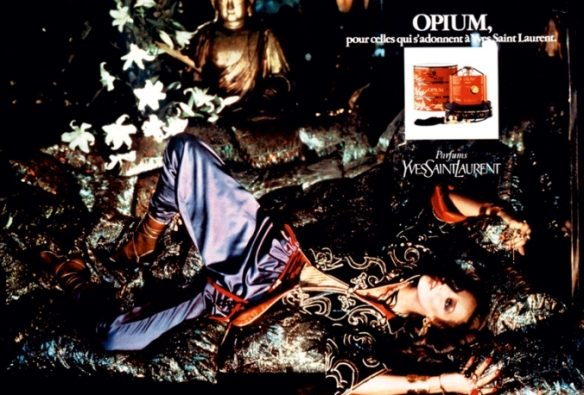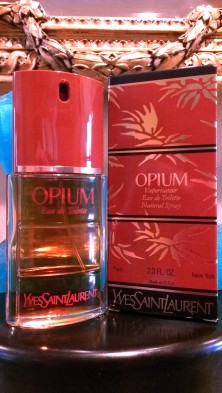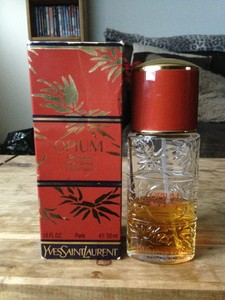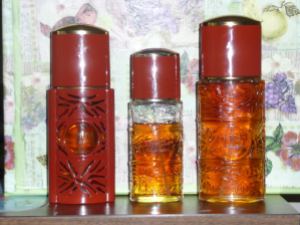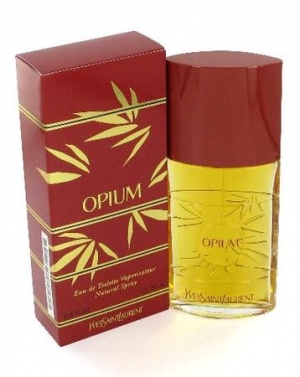Bubbling joy, effervescent gold, the emerald of a mossy forest floor, glowing orange and pink jewels cocooned in French elegance, and a warm smile on the sunniest of days: Champagne. It is liquid gold, but so much more than that in the case of the extremely well-named, vintage fragrance from Yves Saint Laurent. Some things simply make you happy, and Champagne (or Yvresse, as it was quickly re-named) is one of those things for me. I always stand a little straighter when I wear it, feel brighter, with more of a kick in my step. It makes me feel elegant and sophisticated, even when I’m wearing jeans and a t-shirt. I feel smoothed out, covered in gold, and dripping glowing jewels of orange and pink.
It doesn’t make a lot of sense on the face of it because Champagne or Yvresse is very far from my usual style. At first glance, it appears like a simple, extremely sweet, very feminine fruity-floral. Look closer and take a deeper sniff, however, and you will see a dark, lush forest of green carpeting those fruits and flowers, a base of oakmoss of such high quality that I’ve only smelled its like recently in $400 and $900 fragrances from Roja Dove.
There is green aplenty in Yvresse, but perhaps the real joy stems from the effervescent, incandescent bubbles of gold that hit your nose from the very start. Clever uses of menthol create a chilled sensation that very much evokes the subtle, sparkling tingle of really good, expensive champagne. Yet, the bubbles are only half the story.
Tart, tangy juiciness drips from lush nectarines, lychee, and peaches with a joyful abandon that feels like the best of summer. Yvresse is most definitely a chypre first and foremost, but the fruited touch makes the scent as warm and as sweet as a big, infectious grin. All of the haughty, aloof, cool distance that the dark green oakmoss in a chypre can create has been replaced by bright, sunny plushness. Even when the fragrance turns drier and less sweet, the lingering touches of peach and vanilla create a softness that is approachable elegance at its best. It’s not the stark, perfect beauty of Grace Kelly (who is perhaps a perfect representation of a chypre’s aloof coolness), but the warm smile of Audrey Hepburn. Yvresse/Champagne is bright joy and sunniness mixed with elegant sophistication and sweet femininity — all in one very affordable bottle.
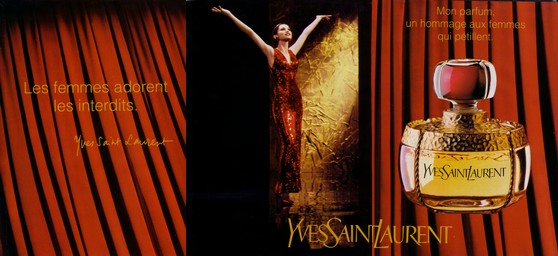
YSL Champagne ad showing the small, squat parfum bottle, not the EDT one. Source: ladies-with-bottle.blogspot.com
Yvresse was created by Sophia Grojsman, and was originally released as Champagne in 1993. The French champagne industry immediately had a snit-fit over the name, outraged that something could be called “Champagne” that wasn’t a French sparkling wine. (Technically, champagne is terroir-specific, as sparkling wines from other regions have a different appellation. To give you just one example, in Spain, they are called “Cava.”) The champagne industry sued for trademark violation, and if you’re rolling your eyes, you’d be right. Yves St. Laurent lost the lawsuit and was forced to change the fragrance’s name to Yvresse, which essentially means a state of intoxicated joy. All that changed was the label on the bottle and its look, not the ingredients themselves.
The fragrance is most commonly available as an eau de toilette, though a rare parfum version was also released. This review is just for the eau de toilette. I have bottles of both Yvresse and Champagne in that concentration, and find them to be virtually identical. The greatest difference between the two is sweetness and the price, as vintage Yvresse is extremely inexpensive and widely available on eBay. You can find a small bottle as low as $29 right now, but the same size for Champagne costs significantly more. (Almost a $100 more.) For that reason, in part, I used my bottle of Yvresse to test for this review, though the main reason is that my bottle of Champagne is running dangerously low and I want to keep it as long as possible. I’ll repeat that, in my eyes, the two fragrances are almost identical. The reason for the difference in pricing is that far fewer bottles of “Champagne” were released, so they are more of a collector’s item. The smell, however, is the same.
Fragrantica lists Yvresse’s main notes as:
nectarine, anise, menthol, Otto rose, blue rose, litchi, oak moss, patchouli, vetiver.
Ozmoz has a more complicated list, but, despite its entry date of 1993, shows a photo of the new, modern, very different Yvresse. So, taking things with a grain of salt and the possibility that Ozmoz is providing the reformulated fragrance’s new notes, the olfactory pyramid is supposedly:
Note of Top : Peach, Apricot, Star Anise / Chinese Anise, Cumin
Note of Heart : Jasmine, Carnation, Rose, Cinnamon
Note of Base : Castoreum, Vanilla, Cedar, Styrax
I’ve never seen any list for the original Champagne or Yvresse that includes carnation or jasmine, never mind cumin! I certainly don’t smell either of those three notes, and they’re not mentioned on the note list that came with my bottle of Champagne. Stranger still is Ozmoz’ omission of nectarine, which is commonly known to be a major part of the scent.
To my nose, the notes in vintage Yvresse include:
nectarine, peach, anise, menthol, Otto rose, blue rose, litchi, oak moss, patchouli, vetiver, castoreum, and vanilla. Possibly mandarin orange, cedar, and cinnamon as well.
Yvresse opens on my skin with intense fruited sweetness that dissolves instantly into tangy, tart nectarines, orange fruits, a pink rose, and oakmoss. There is a hit of bitter citric zestiness like when you peel a baby tangerine and the oils squirt on your skin. Soft ripe peaches join the parade, but there is as much tartness in the Yvresse’s opening as there is sweetness. There is also brightness, so much brightness that it positively glows. It infuses the deep, dark oakmoss with incredible vibrancy, transforming it from the typically drier aroma of real mousse de chene oakmoss absolute. There is still a massive amount of the dark note in Yvresse, but it’s fresher than the usual scent of dry tree bark with a touch of salt and slightly fusty, dusty, mineralized grey lichen. Instead, it feels like bright emerald green that carpets the forest floor with thick, bouncy plushness.
Other notes soon appear. There is a watery, sweet lychee lurking around the edges, along with a deep, pink, Damascena rose and whiffs of a velvety castoreum. Deep in the base, there are flickers of cinnamon, alongside a bright, fresh, green, almost minty vetiver. The whole bouquet sparkles as effervescently as champagne. There is a fizzy quality as the notes dance around, buoyant, fresh and happy like young girls on a red carpet, only this one is dark green, emphasizing their golden and orange glow even more.
For all the sweetness in the opening minutes, Yvresse is always much less syrupy on my skin than others have reported and a definite chypre from the very start. The dark, emerald moss is really the key to the fragrance; it’s a solid, dominant note which gives Yvresse a firm, sometimes dry, green spine from head to toe, and from start to finish.
Interestingly, I tried Champagne in a side-by-side test, and the fragrance was both significantly sweeter on my skin, and less mossy. I think the intense syrup stems from the fact that my bottle of Champagne is exactly 20 years old. The inevitable evaporation that occurs over time thereby concentrates some of the fragrance, and that amount of sweetness ends up overwhelming the dryness of the oakmoss in Champagne. In contrast, my much newer bottle of Yvresse (that may be about 10 years old, or a little bit younger) is drier, greener, less sweet, more chypre-like, and with significantly greater brightness. It also fizzles and sparkles from the start. Nonetheless, all of this is a question of degree, mere fractional differences that don’t change the primary essence of the fragrance.
In all cases, both Champagne and Yvresse open with enormous potency and sillage for a fragrance that is a mere eau de toilette. The strong sillage wafts about you like a cloud, projecting a good 4-5 inches of a cloud that is tart nectarines, zesty tangerines, sweet peaches, delicate lychee, a dash of rose, and endless vistas of dark oakmoss. The potent cloud softens a tiny bit after 20 minutes, and hints of other notes appear. There are spices, noticeably dry cinnamon, but there is also something fiery that feels like star anise with almost a chili-pepper, pimento bite. They’re subtle and very muted, however, and you have to really sniff to detect them.
One of the things I love the most about Yvresse is the fizzy sparkle. Originally, I thought it may be the result of the contrast between the deep velvet of the foresty base and the tangy, tart, top notes. Later, I thought that it may be merely the power of suggestion. If so, then everyone who tries Yvresse is equally suggestible because they’ve all noticed the same thing. Something in Yvresse really and truly replicates the nose-tingling bubbles of champagne, subtle though it may be amidst all the powerful accords. However, having stared at the notes for this review, I’ve finally figured out the cause. The “menthol.” It’s a note that initially left me scratching my head, because nothing in Yvresse reads as anything medicinal, camphorated, or even very minty. It translates instead as a cool, almost icy, frosted chill. Yet, menthol makes sense. It serves to amplify the more mossy, green elements in the base, while also diffusing the sweetness at the top. It transforms those fruity accords into something more chilled, while also giving a little fizzy tingle in your nose the way really expensive champagne can do.
Thirty minutes in, Yvresse is a sweet, fizzy rose scent infused by tart, sweet fruit, a whisper of dry cinnamon and anise, and endless amounts of dark, dry oakmoss. The oakmoss feels as though it dominates the top, middle, and bottom layers, taking over every part of the fruit and rose accord, balancing it all out in the most elegant, sophisticated mix of green. Deep down in the base, the first touches of vanilla become noticeable, but it will take a while for it to rise up to the top.

“Pink & Green Tree Painting by Artist Louise Mead.” Source: ebsqart.com. (Website link embedded within photo.)
At the 90-minute mark, the fragrance starts to shift. Yvresse loses a lot of its fizzy, champagne quality, along with its sweetness. As they recede to the periphery, the cool, crisp greenness takes their place, imbued with some sharpness and with the faintest hint of spiciness from the star anise. Equally subtle is the whiff of castoreum in the foundation with its quietly animalic, brown velvetiness. All the base notes are muted, and detectable only if you really sniff hard; the general impression from afar is of a deep, multi-faceted, seamless blend of emerald green, foresty moss infused with roses and fruited sweetness.
Both the fragrance and the individual elements have softened, with projection now limited to only 2-3 inches above the skin. It’s still fantastic for a mere eau de toilette, though. In fact, in every way, from richness, depth, body and projection, Yvresse is really more like an eau de parfum than anything else. It’s certainly ten times stronger and more full-bodied than any current Hèrmes parfum from the ultra-minimalist Jean-Claude Ellena.
Yvresse remains largely unchanged for the next few hours. There are subtle differences in the order or prominence of the notes, but the most noticeable thing about the scent is that it gets drier and darker. Around the start of the third hour, there is a subtle smoked woodiness that appears, leading me to think that the fragrance may indeed have cedar in it as Ozmoz states. The nectarine fades to the sidelines, letting the peach take over, while the vanilla slowly rises to the top. Yvresse becomes a beautifully balanced mathematical equation of fruits and florals; sweetness and dryness; joyful, bright warmth and dry, restrained darkness in a blend that feels like a very grown-up, elegant take on a fruity-floral.
For me, modern interpretations of the fruity-floral genre always feel very young, very girly in a teenage-like way with its abundance of syrup and purple, fruited patchouli. (Exhibit A would be the terrible, banal, and simpering Chypre Fatal from Guerlain.) Originally, however, the fruited chypre genre was for sophisticated women, with scents like the legendary Mitsouko which is also based on peach and oakmoss. Yvresse is different, because it lacks the powerful bit of “skank” that makes Mitsouko so sensuous (or sexual, in some people’s eyes). It is a much sweeter, sunnier, happier scent without that overly sensuous underpinning. It’s not sexy like Sophia Loren, or a grand dame like Catherine Deneuve (who would perfectly embody Mitsouko). But it’s also not girlish and youthful like a Gigi.
For all the happy bubbliness of Yvresse’s start, there is too much underlying elegance and sophistication. It is Audrey Hepburn in Breakfast at Tiffany’s, with her charm, genuine warmth, and her open smile, all in a very classique, elegant body. In short, Yvresse is approachable chic and sophistication that never loses sight of its playful side. In modern parlance, Yvresse might perhaps be a very grown-up Reese Witherspoon going to the Oscars.

“Shades of Leaves,” abstract photography by Bruno Paolo Benedetti. (Website link embedded within photo.)
In its final phase, Yvresse is a soft blur of oakmoss infused with abstract floral and fruited elements. For a while around the end of the 6th hour, you can still vaguely distinguish the peach, rose and cedar notes, but they are increasingly folded into that plush, soft, smooth greenness. The nectarine has vanished, as did the lychee and spices hours earlier. There is a subtle vanilla element in the base that feels as airy as mousse, but it’s blended in as well, and feels quite muted. In its final moments, Yvresse is merely a delicate haze of cool, somewhat dry, faintly sweet mossiness.
All in all, Yvresse consistently lasts between 9 and 9.75 hours on my perfume-eating skin, depending on the quantity I apply. With a larger dose, the fragrance takes 5.5 hours to become a skin scent, while a smaller amount yields about 4/25 hours. These are exceptional numbers for a mere eau de toilette, but as noted earlier, Yvresse feels very much like an eau de parfum in strength.
I absolutely adore Yvresse/Champagne, and it is one of my “happy scents” that I turn to when I need a little energizing boost, or Prozac in a bottle. It always makes me feel more elegant and put-together, even though blazing femininity is not my style of perfumery. I would not recommend Yvresse for most men, as I think the bouquet would be viewed as too feminine by those with more conventional tastes.
However, I know a few confident men who love the fragrance, perhaps because of its mossy chypre character. Men who wear fruity-chypres like Mitsouko and who enjoy sweet scents may like Yvresse. On the other hand, Mitsouko is much drier and with significantly more pungent oakmoss, so don’t expect a very close kinship in that regard. Yvresse may actually be closer in feel to Andy Tauer‘s Une Rose Chyprée, taking a lot of its rich moss with a sunny, happy rose facade, and then tossing in a dab of the tart fruit in his stunning PHI Une Rose de Kandahar. Again, though, Yvresse starts at a much sweeter level.
Another fragrance that comes to mind is Viktoria Minya‘s exquisite Hedonist. Yvresse is a very different scent and lacks the boozy, oriental qualities of the niche scent, but the two share that same fizzy feel at the start, a fact I remarked upon even in my review of Hedonist. They also have the same very sunny, opulent, golden sophistication and joyousness. That said, Yvresse very much demonstrates the signature of its maker, Sophia Grojsman, who is responsible for such intensely feminine, sweet fragrances as YSL‘s classic Paris and Lancome‘s Trésor. In short, it definitely skews very feminine in nature.
Yvresse is extremely affordable for such an elegant, vintage scent, though the same fragrance under the Champagne name costs significantly more. On eBay, you can find Yvresse for as low as $29 in the smallest 50 ml/1.7 oz size. It’s an absolutely fantastic price for a scent that shows the same complexity, elegance, richness, and nuance as a $200 niche fragrance. Actually, I’ve tested a number of $275 to $425 florals that don’t have one tenth of Yvresse’s sophistication or complexity. I don’t think the $29 figure is the norm, but Yvresse is still a bargain even at its more typical, slightly higher price.
As shown in the Details section below, you can generally find Yvresse on any number of discount or outlet fragrance sites for somewhere in the $42-$65 range for a 60 ml/2 oz size. In the UK, I’ve seen Yvresse sold cheaply for £33.31 in that same size, and for £50.05 for a huge 125 ml/4.25 oz bottle. Online retailers are a more steady, permanent option than relying on the vagaries of what may be offered on eBay, but you’ll sometimes get much better deals on the auction site, so you should check both. Unfortunately, I’ve never seen Champagne offered on any site other than eBay.
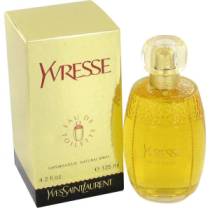
Vintage Yvresse but slightly newer, without the wide gold band around the top, and with much paler font in the writing. This version is still vintage Yvresse though.
In all cases, it’s cheaper to buy Yvresse than Champagne. To give you an idea of the comparative range of prices for Yvresse versus Champagne on eBay, here are some links which, it goes without saying, will soon become obsolete once the auctions end in a few days: an unopened, boxed Yvresse EDT in a small 1.7 oz/50 ml size is going for $29.99; a 2 oz/60ml boxed Yvresse for $57.19 from FragranceNet; five bottles of boxed Yvresse in a 3.3 oz/100 ml bottle, each for $70.25; or a huge 125 ml/ 4.25 oz boxed Yvresse for $89.99. In contrast, the cheapest starting price for a boxed bottle of Champagne in the small 1.7 oz size is $125, with larger sizes averaging about $195-$200 before a single bid has been placed. For those who are reading this review months down the road, you can use the following search which should work regardless of time and which should not become obsolete: Yvresse and Champagne options on eBay, including the rarer parfum version.
One word of caution regarding names and boxes. No matter which name it is sold under, the eau de toilette always comes with a gold box and the bottle is oval-shaped, like a football. Slightly newer bottles of Yvresse don’t have the wide, dimpled, gold band going around the top of the bottle or dark font for the writing, but they are still vintage Yvresse. In fact, that is the version I own and used for this test. You can compare the bottle shown to the left with the one posted immediately above. They are both vintage. However, any fragrance with a red box is Yvresse Legere, which is a different perfume that was released in 1997 and which has a very different aroma profile. (It’s centered around mimosa, for one thing.)
Also, you will want to stay far away from anything in an opaque, cream-coloured bottle as shown in the photo to the right. In 2011, under L’Oreal’s ownership, YSL released a new Yvresse in 2011 called La Collection Yvresse. This is a totally different fragrance, no matter what its name purports to be. As that Fragrantica link will show you, the notes are substantially different and limited to 5 things: litchi, nectarine, rose, violet, and patchouli. In short, it is missing half the notes of the original Yvresse, most particularly the essential oakmoss base. I haven’t tried it out of protest, and I never will given my loathing of every single thing put out thus far by L’Oreal under the modern YSL name. They’re all terrible. (You don’t want to get me started on the revolting, emasculated eunuch that is the modern, current “Opium.” It is an utter travesty.)
Yvresse isn’t for everyone, but its cheerfulness makes it a favorite of mine, even if I don’t turn to it as much as I once did. In a few weeks, it will be New Year’s Eve, a time when champagne abounds. This year, I think I shall take my fizziness in a perfume bottle, with vintage golden bubbles from Yves Saint Laurent. It’s the perfect way to ring in 2014: a note of boundless joy and bright optimism, all wrapped up in sparkling elegance.

